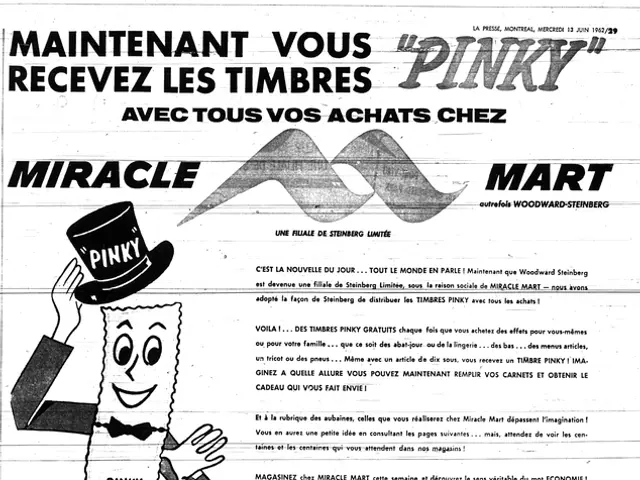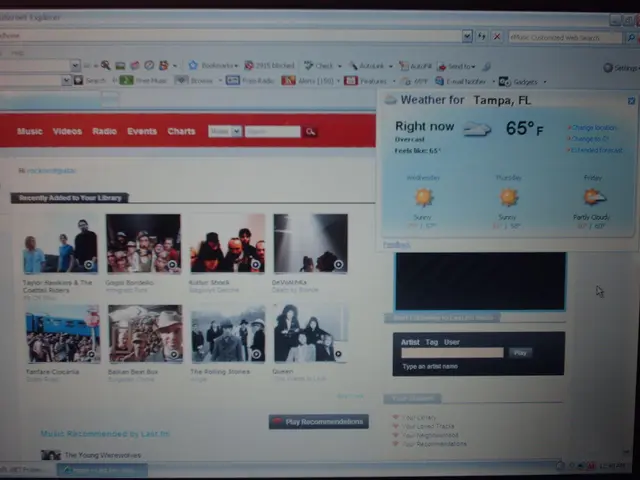Strategies for Encouraging App Downloads from Your Site (Minimizing bothersome Pop-ups)
In today's digital age, where user acquisition costs are on the rise, it's essential to have a strategic approach to driving app installations. By integrating strong app store optimization (ASO) techniques with website optimization strategies focused on user experience and conversion, you can maximize your chances of converting website visitors into app installs. Here's a step-by-step guide to help you achieve this.
Showcasing App Visuals
A visually appealing and user-friendly website is the first step towards encouraging app installations. High-quality app screenshots and preview videos, strategically placed on your website, effectively showcase the app's features and encourage visitors to download it.
Clear Calls-to-Action (CTAs)
Prominent and persuasive "Download App" buttons, linking directly to your app store pages, should be placed throughout your website. These CTAs should be visible, easy to find, and guide users towards installing the app without friction.
Mobile Optimization and Fast Load Times
Given that many app installs come from mobile traffic, it's crucial to ensure your website is fully mobile-responsive with quick loading speeds. A fast, responsive site positively impacts conversion rates, providing a seamless, frustration-free experience for mobile visitors.
Leveraging ASO Best Practices
To improve app store search rankings, use the right app name and keywords. Encourage positive reviews and high ratings, optimize app store descriptions and icons, and use A/B testing on app visuals and descriptions to maximize install conversions from the app store listing itself.
Utilizing Analytics for Continuous Improvement
Employ tools to track both website user behavior and app store performance. Analyze traffic, conversion rates, and user engagement to refine your website content, CTAs, and app store assets quickly and effectively.
Showing Social Proof and Benefits
Highlight testimonials, reviews, and key app functionality on your website to build trust and clearly communicate the app’s value, which motivates visitors to download.
The goal is to insert value-driven CTAs at intent-rich moments, not to throw banners everywhere. The website is the highest-intent real estate for app installs, but most brands bury their CTA to download the app at the bottom of the page or do not mention it at all.
Key Elements for Psychological-Driven Copy
Clarity, scarcity, social proof, exclusivity, commitment bias, and reward anticipation are key elements to use in psychological-driven copy that gets clicks to download the app.
Segmenting the Web-to-App Install Strategy
The website-to-app install strategy needs segmentation, showing different app CTAs based on user behavior. Each segment of users on the website (mobile, desktop, new visitors, returning customers, ready-to-buy, window shoppers) behaves differently and requires a tailored web-to-app conversion tactic.
Tracking Performance
It's important to track performance across three layers: acquisition source, install-to-action conversion, and retention and LTV (Lifetime Value). Not every website visitor is ready to install the app, and the install strategy should match user intent.
Designing the Site for App Install Nudges
Smart banners, floating buttons or tab bar links, homepage hero banners, site-wide sticky headers or footers, and product and category pages are effective ways to design the site to nudge installs without ruining UX.
Offering Exclusive Rewards
To drive app installs, offer rewards that feel exclusive, personalized, and tied to ongoing benefits, beyond discounts.
Crafting the App Landing Page
The app landing page needs to sell the experience, not just the app, with real screenshots, explained features, and short testimonials. The page should be lightning-fast and optimized for speed, reducing friction, and using app deep linking strategies.
Utilizing Dynamic Display Options
Tools like Google Tag Manager, Shopify scripts, or headless CMS logic can be used to dynamically display banners, popups, or in-page messages based on user behavior.
In 2025, brands winning in the app market are building frictionless website-to-app install strategies that guide users with subtle prompts, persuasive copy, and smart placements. By following these guidelines, you can optimize your website for app installations and stay competitive in the ever-evolving digital landscape.
- To maximize app installations, complement your app store optimization techniques with website optimization strategies that focus on user experience, conversion, and strategic placement of high-quality app visuals, such as screenshots and preview videos.
- In the digital age where user acquisition costs are rising, utilizes psychological-driven copy and dynamic display options that showcase clear calls-to-action, exclusive rewards, and effective design for app installation nudges, ultimately guiding users to install your smartphone app smoothly and seamlessly.







